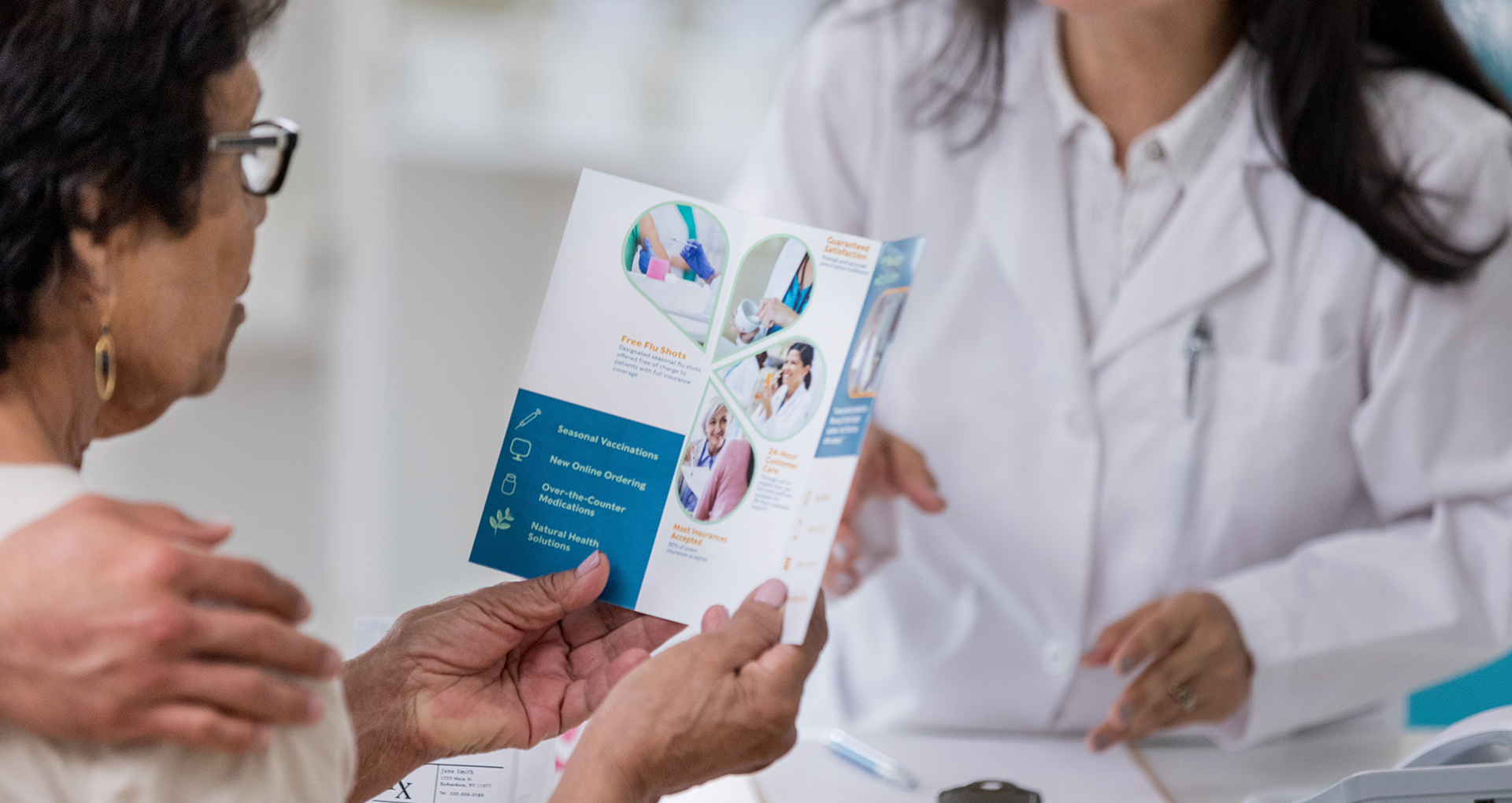Flyer – Effective patient communication and specialist information dissemination in the pharmaceutical and healthcare industry

Content
- What is a flyer in pharmaceutical and healthcare marketing?
- Target groups and areas of application in the pharmaceutical and healthcare sector
- Design and content: How to make a successful flyer
- Digital meets print: the link with online marketing
- Legal aspects and compliance requirements
- Conclusion: The role of the flyer in Pharma Marketing
What is a flyer in pharmaceutical and healthcare marketing?
A flyer is a compact, handy print medium that provides targeted information on a specific topic, product or service. In pharmaceutical and healthcare marketing, it is used in particular to educate patients, present products and support sales. Due to its easy distribution and low production costs, the flyer remains a proven means of communication for directly addressing both healthcare professionals and patients. It can be used as an insert in specialist journals, as information material in pharmacies or as an accompanying document in doctors’ surgeries and clinics.
Target groups and areas of application in the pharmaceutical and healthcare sector
Flyers can address various target groups in the pharmaceutical and healthcare industry:
- Doctors and healthcare professionals receive scientifically sound information on new medications, therapies or treatment options.
- Pharmacists use flyers to explain OTC preparations, active ingredients or for customer advice.
- Patients and end consumers benefit from easy-to-understand educational brochures that explain diseases, treatment methods and drug applications.
- Nursing staff and healthcare providers can receive targeted information on innovative products, hygiene guidelines or preventive measures.
Flyers are used in doctors’ surgeries, pharmacies, hospitals, at trade fairs, in waiting rooms, in direct mailings or as part of sales kits for pharmaceutical sales representatives.
Design and content: How to make a successful flyer
A flyer must be visually appealing and informative at the same time. The content should be clearly structured, easy to understand and visually supported in order to quickly grab the reader’s attention. Important design elements are:
- Concise headlines that arouse interest.
- Easy-to-read typography with a mixture of short blocks of text and bullet points.
- Consistent corporate design that makes the brand or product more recognizable.
- Images and infographics to illustrate complex relationships.
- Calls to action that encourage the next step (e.g. visit the website, ask a doctor, request a sample).
Digital meets print: the link with online marketing
Modern pharmaceutical flyers are increasingly integrating digital elements to link the offline and online worlds. These include:
- QR codes that lead to landing pages with further information.
- Short links or social media handles to strengthen the brand’s online presence.
- Augmented reality elements that enable interactive product presentations.
This combination increases the reach of the marketing campaign and the flyer becomes part of a holistic omnichannel strategy.
Legal aspects and compliance requirements
The pharmaceutical and healthcare industry is subject to strict regulatory requirements, which must also be observed when creating flyers. The most important guidelines include:
- German Drug Advertising Act (HWG): Advertising for prescription drugs is only permitted for specialist circles.
- Medical Devices Law (MPG): Information must be factual, serious and not misleading.
- GDPR compliance: If personal data is collected, clear data protection guidelines are required.
Compliance with these regulations is essential to avoid legal consequences and reputational damage.
Conclusion: The role of the flyer in Pharma Marketing
Despite digitalization, the flyer remains an indispensable marketing tool in the pharmaceutical and healthcare sector. Its strengths lie in the direct and targeted approach, the haptic effect and the possibility of linking with digital content. With an appealing design, clear content and consideration of legal requirements, the flyer can strengthen brand perception, convey knowledge and promote trust in products and companies.
